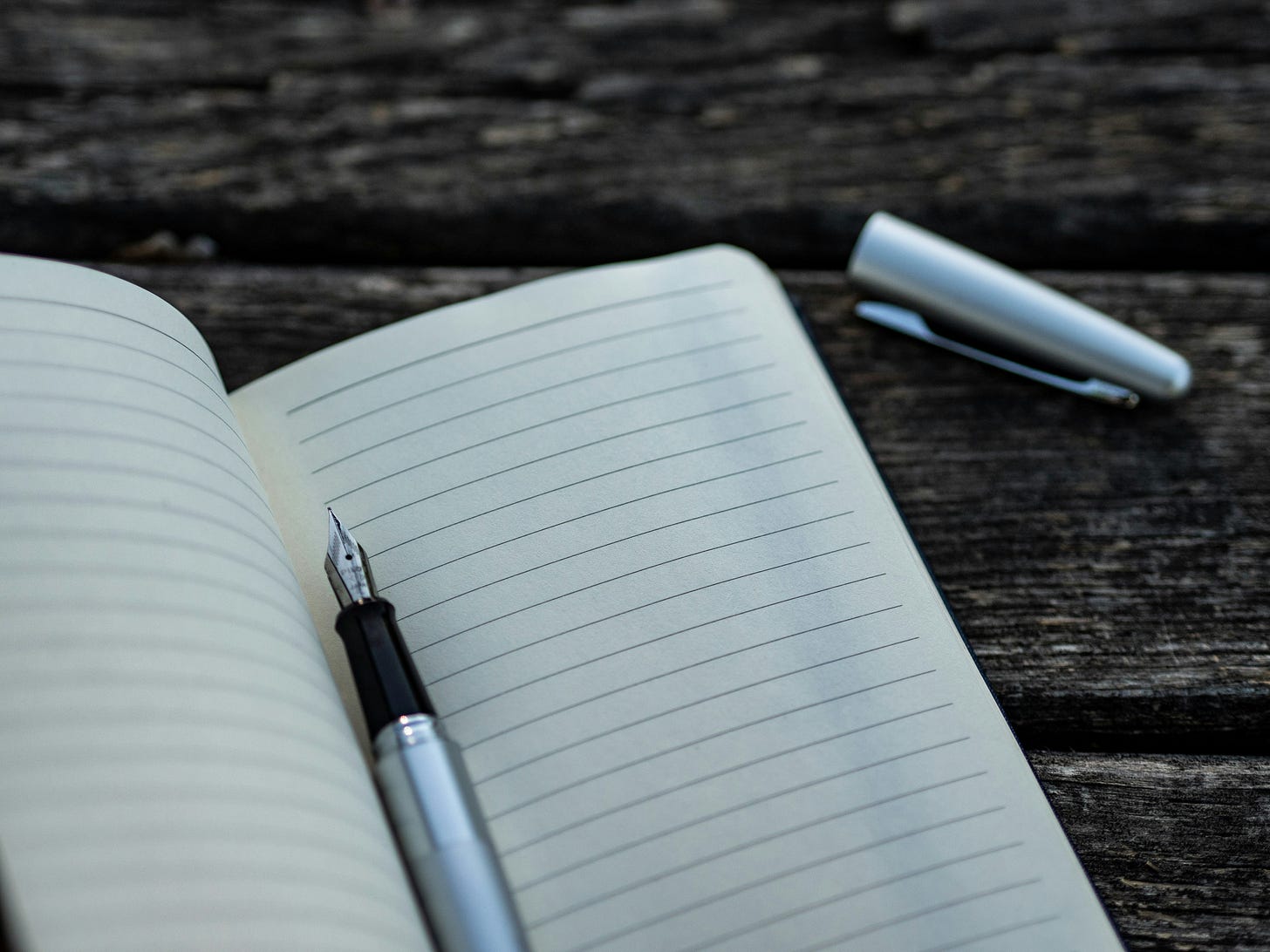Decision Journal: The technique to stop making bad decisions
You need more clarity, not better intuition
🏷️ Categories: Decision making and biases.
One of the strangest aspects of being human is that we can’t fully trust even our own memories. It’s not just that we forget — we distort. Our brain rewrites what we thought, felt, or decided in the past to make us seem more logical, wiser, more rational.
This wouldn’t be a problem if it weren’t for the fact that your life is the result of your decisions.
And if you don’t clearly remember how you moved forward, you're unknowingly deceiving yourself — you're unable to analyze your own path. This explains something that seems mysterious: why intelligent people make the same mistakes over and over again.
It’s not a lack of intelligence. It’s a lack of information.
You’re missing crucial information that could help you make better decisions in the future. And according to Nobel Prize–winning psychologist Daniel Kahneman, the best tool to fight this problem is to start keeping a decision journal.

The Decision Journal Technique
A decision journal is like setting up a quality control system for your thinking. In factories, no one blindly trusts the process — they check the final result for defects, right? But the brain...
...has no quality control over the final decisions you make.
That’s what the decision journal is for — to force you to think before you act.
We tend to believe we understand the problem before deciding. But that’s not the case. What feels like clear thinking in our head becomes fuzzy when we try to write it down. As Feynman would say, in explaining it, you discover how little you actually knew.
A decision journal works like a mirror. It shows who you really are.
When you start systematically recording how you think, you begin to see patterns. You notice that you take more risks when you're euphoric. Or that you tend to be more conservative after a bad experience. You discover your weak spots. You understand when your intuition fails, and so much more.
Only once you have this information can you improve your decision-making.
Decision Journal Template
The most important question is: What should a decision journal include?
There’s no single model, but there is a basic structure you can adapt. Here’s a template I’ve created so you can start today:
Decision Journal Template
Situation: Briefly describe what’s happening. What triggered this decision?
Physical and emotional state: Tired? Happy? Anxious? This has a big impact.
Problem statement: Clearly define the problem you're trying to solve.
Relevant variables: What variables does this decision depend on?
Complications: What obstacles make this a non-trivial decision?
Alternatives considered and discarded: Justify which options you considered and discarded. This forces you to think beyond your first impulse.
Range of possible outcomes: What could happen? List from worst to best.
Expected outcome (and why): Make a specific prediction. Assign probabilities. What do you think will happen? Why?
Two optional questions:
What are you sacrificing by choosing this option? (opportunity cost)
What impact will this have in 10 days, 10 months, 10 years? (temporal distancing). This technique helps calm momentary emotions, which distort the real importance of things (Heath & Heath, 2013).
An Example
Situation: Current job is stable but stagnant. Offered a position at a startup with more learning potential, but no guarantees.
Physical and emotional state: Nervous but motivated. Slept well.
Problem: Do I value stability or long-term growth more?
Variables: Salary, learning, company culture, financial security.
Complications: Risk that the startup fails and I end up unemployed.
Alternatives:
Discarded: Stay one more year in my current job (I’m not happy with the work environment and the salary could be better).
Alternative: Look for another offer with better pay and culture, though with less short-term growth than the startup.
Range of outcomes:
Best → The startup grows and I move into a high-level position with a good salary.
Worst → The startup fails in 6 months and I’m unemployed. I’d need significant savings and other job leads ready to respond quickly.
Expected outcome: 70% chance the startup grows and I learn a lot. 30% chance it fails and I’m left jobless, but even then I’ll have learned and could easily switch to another company thanks to my current and future experience after the startup.
Decision: Switch to the startup despite lower pay but higher growth potential. Action steps: search for backup companies in case the startup fails and increase savings rate in case I lose my job.
3 Tips for Using a Decision Journal
Be honest: The goal isn’t to always be right — don’t sugarcoat reality or your bad decisions just to feel better about yourself. The key is understanding why you think the way you do. Self-knowledge requires honesty.
Be clear: Don’t use vague justifications. Don’t write “this seems better.” Say, “I believe this is the best option because of X. I assign it an 80% chance of success.” Write as if someone else will read it and ask questions. The clearer your decisions are, the easier they are to review and compare.
Review: After some time, go back and review what you wrote. You’ll be surprised how often you thought you were clear — and you were wrong. That surprise is pure learning. As a tip, set the review date on your calendar so you don’t forget. Pick a time when the outcome is known or when enough consequences have unfolded. That could be days, weeks, or months — it depends.
The Story You Tell Yourself vs. What You Actually Do
Keeping a decision journal reveals something uncomfortable: you live two parallel lives.
One is the story you tell yourself — that you’re rational, that your successes are due to your skill, and that your failures were just bad luck. It’s a coherent, comfortable story…
…and almost always false.
The other life is reality: your decisions were sometimes based on vague assumptions, fleeting emotions, impulses, or misunderstandings, and you justified them with explanations that sounded good — but weren’t real or objective.
That gap between those two lives — your internal dialogue and reality — is what causes poor decisions.
We’re incredibly skilled at rewriting our own stories and decisions. So much so that we fool ourselves… If you don’t have a system to see your mistakes honestly, you’re doomed to repeat them.
Start a decision journal.
Your future self will thank you.

✍️ Your turn: What techniques do you use to make decisions? Any advice?
💭 Quote of the day: “A person may not like their choice, but they’ll stick to it because, even in the worst circumstances, they believe it was the best option available at the time.” — Christopher Paolini, Eldest
See you very soon, take care! 👋
References 📚
Heath, C., & Heath, D. (2013). Decisive: How to Make Better Choices in Life and Work.







A very carefully organized plan of attack with lots of items that most of us wouldn't even think to address. Thank you, Alvaro.
Interesting post, in many cases it is really hard to reflect on why a decision was made after it has been made. Likewise, initiatives or changes are often judged by a different criteria than the original objectives etc. When I worked at a school I unsuccessfully tried to have us outline the intended outcomes of changes, decisions, and policies, so we could assess them with the original intent (and hence work on our ability to diagnose and intervene) — instead what often happened is that we evaluated whatever had happened. Which is also important. I tink documenting why a decision was made is key to improving decision making processes.
In my historical work I tend to have more admiration for those who were wrong for the right reasons that those who were right for the wrong reasons because I give primacy to systems rather than flukes.